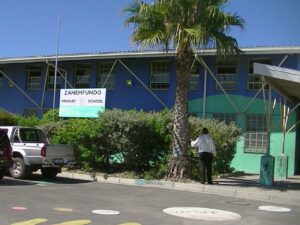[imagesource: JL / The Pharmaceutical Journal]
If you’ve been paying attention, you’ll know that the issue of racism at some of South Africa’s premier schools, both public and private, has come under increased scrutiny of late.
Herschel Girls’ High faced considerable backlash after deleting comments critical of the school’s “performance activism”, and then the Instagram account @yousilenceweamplify began detailing just how widespread the problem really is, both in Cape Town and across the country.
If you haven’t yet, take a minute or two and read some of the heartbreaking personal stories amplified by that account.
Clearly, South Africa’s education system has institutional flaws that need redressing, and Jonathan Jansen, a Distinguished Professor of Education at Stellenbosch University, has a few ideas.
Writing for Business Day, Jansen says that “for too long racism has walked the hallowed halls of elite schools”, adding that “it will take exceptional school leadership for fundamental change to happen in addressing systemic racism in schools”.
Before we get to his seven-point plan, some context from Jansen
Having done hundreds of workshops across the country and in other parts of the world on this subject, I have always been struck by the willingness of white schools (or universities) to invite a black speaker to tell them about racism and injustice and enjoy tea and snacks afterwards..
The problem is that most parents in schools do not want change. They would leave if the black student numbers reached a “tipping point” in enrolments; it’s called white flight. They would remove their children if the number of black teachers grew to an uncomfortable level. They would have all kinds of excuses for not offering an African language as a second language alternative or soccer as a major school sport. Those are facts…
Black middle-class parents are often reluctant to complain or complain repeatedly for fear of being called a problem parent and threatening the place of their child in a well-resourced school. So they shut up but fume when among friends and families about what happens to them at these former white schools.
That silence has now been broken, albeit by the students themselves, rather than parents.
Jansen believes it is possible to get out of this “rut”, whilst admitting it can only be done “with great difficulty”.
The meaningful change needs to come from the schools themselves, and the school leaders, with Jansen outlining seven effective actions:
1. Acknowledge in public the systemic nature of racism in the school. The more you pretend it is one or two bad apples (teachers or students) to be dealt with on an incident-by-incident basis, the more your school will continue to struggle with racism.
2. Develop clear public statements that the school abhors racism. Every teacher, student, parent and alumnus must know where your school stands on racism.
3. Create confidential and trusted channels within the school for reporting racist incidents. A student who is insulted with derogatory words or behaviour must be able to instantly report the teacher or student(s) without repercussions for the complainant.
4. Act swiftly in dealing with verifiable complaints. Those white students and teachers who are accused of racist acts are often repeat offenders. They get away with such behaviour because school leaders refuse to act firmly and quickly in dealing with offenders.
5. Work to change the underlying culture that perpetuates racism in schools. Much can be done. Regular workshops with teachers and students on antiracism concerns, for example the nature and effects of racial microaggressions in a school. Change the white symbolic culture of the school and create new, inclusive symbols and commemorations.
6. Change as a matter of urgency the proportion of black permanent teachers and leaders on the staff. The recycling of white principals from one school to the next and from one area to another must stop. The racist message that competence resides in a white teacher or leader is not lost on our young people.
7. Bring parents on board — or leave them behind. Parents and alumni are often the most important blockers of transformation at schools. It is important for school leaders to invest time and energy in persuading parents that a richly diverse school that is inclusive and builds positive relations among students better prepares their children for leadership in a changing world.
Jansen stresses that the buy-in must come right from the top, with consistent messaging from principals and other school leaders, and a commitment to take the voices of those students who speak out seriously.
With pupils past and present across the country speaking out and calling for change, if you don’t recognise that there’s a problem, your head is well and truly buried in the sand.
Social media users love an inspirational quote about racism being something that is learned and taught, rather than something that a person is born with, so there is no better place to start than with our schools.
You can read Jansen’s article in full here.
[source:businessday]





